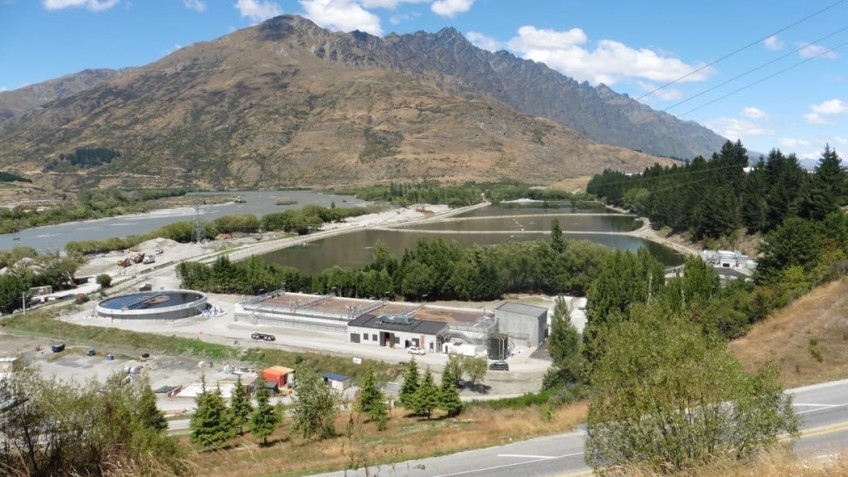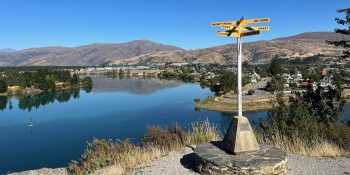New NZ wastewater standards would apply to Shotover consent

New national wastewater environmental performance standards released today would apply to wastewater discharged into the Shotover River if the council receives consent to continue its discharge there.
The Water Services (Wastewater Environmental Performance Standards) Regulations 2025 become law on December 19 and determine what kind of treatment is needed before wastewater can be released into the environment. The regulations outline contaminant limits for treated wastewater discharged into water and will apply to Queenstown Lakes District Council’s consent to discharge treated wastewater into Shotover River, if it is approved by the Environment Court.
Queenstown Lakes District Council is seeking consent to discharge treated wastewater from the Shotover Wastewater Treatment Plant into Shotover River. It also wants permission to disturb the riverbed to create a diversion channel.
The council is already discharging into the river after it used its powers under the RMA to take emergency measures to do so in March. These consents seek to legitimise the emergency measures.
If the Environment Court approves the QLDC consents, they will need to meet the standards in the new regulations.
The standards for discharging to rivers depends on the ratio of freshwater to wastewater at the point of discharge. This is calculated by looking at median daily discharge volumes and flow data.
It is unclear whether Shotover would be classed as very low, low, moderate or high dilution but discharge into a river with a moderate dilution ratio (between 50 and 250:1 freshwater to wastewater) will need to meet the following concentration limits:
- Organic matter annual median concentration must not exceed 15 milligrams per litre of wastewater.
- Organic matter concentration must not exceed 30 milligrams per litre of wastewater
- Total Suspended Solids annual median concentration must not exceed 15 milligrams per litre of wastewater
- Total Suspended Solids concentration must not exceed 30 milligrams per litre of wastewater
- Ammonia (ammoniacal nitrogen) concentration must not exceed 3 milligrams per litre of wastewater
- Total nitrogen annual media concentration must not exceed 10 milligrams per litre of wastewater
- Total phosphorus annual media concentration must not exceed 5 milligrams per litre of wastewater
- E.coli concentration must not exceed 3,250 cfu per 100 millilitres of wastewater.
The new E. coli limits are more than eight times the concentration found in recent Otago Regional Council samples which showed concentrations of 380 cfu per 100 ml in November.
The November samples also show concentrations of organic matter at 8 mg/L and total suspended solids at 4.2 mg/L. Phosphorus concentration at the time was 1.92 mg/L.
In October, samples showed Nitrogen concentrations of 8.8 mg/L and ammonia and 4.23 mg/L, in excess of the new regulations.
Queenstown Lakes Community Action founder Nikki Macfarlane said the group was reading the act to understand it and was investigating and researching. She said the group would issue a statement in the future.
In a statement announcing the regulations, Local Government Minister Simon Watts said they would save councils money.
The statement said the standards provided “a nationally consistent and practical framework for renewing wastewater consents” reducing the need for expensive, duplicated technical assessments.
“This is a major step forward. By cutting red tape and providing clarity, we’re reducing consenting costs by up to 40 percent per plant, that’s a potential saving of $300,000 to $600,000, and up to 60 percent for smaller plants. Those savings flow directly through to councils’ bottom lines and ultimately to ratepayers,” Watts said.

- Local Government Minister Simon Watts.
Sara McFall, head of Systems, Strategy and Performance at the Water Services Authority Taumata Arowai, said one of the drivers for the standards was the lack of a consistent existing approach to the requirements for wastewater treatment.
Previous standards were determined on a case-by-case basis through consents.
"Moving away from bespoke arrangements will also allow for better monitoring and public transparency of the performance of wastewater treatment plants,” she said.
“The treatment limits in the standards reflect the approach generally found in modern consents and are pitched at a level that will lift overall environmental performance, calibrated to the sensitivity of receiving environments.”

























